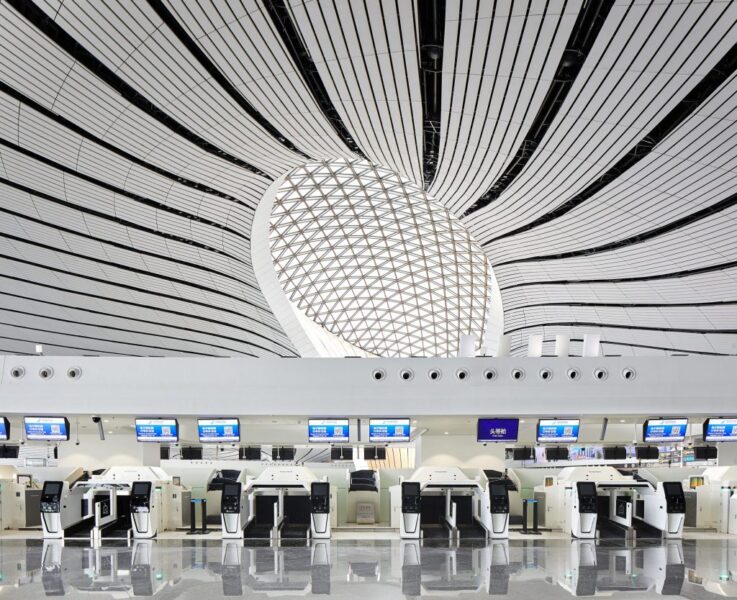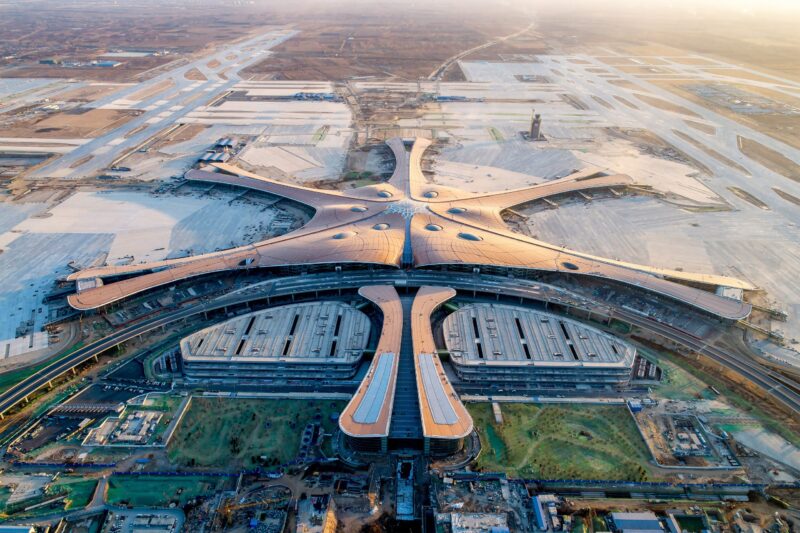Beijing Daxing International Airport opened for operations in September 2019, following more than four years of construction. Daxing also known as Beijing New Airport, is the biggest airport in the world. It is also the second international airport of Beijing along with Beijing Capital International airport. The new mega-airport hub is expected to handle up to 45 million passengers per year by 2021 and reach an outstanding 100 million in the future.
The gigantic Daxing airport, with the impressive shape which has given it the nickname “Starfish”, has enormous dimensions. There are currently 4 runways and a vast terminal building covering a 700.000m² area while the ground transportation centre extends to 80.000m².

The terminal building was designed by British architects Zaha Hadid. The domestic and international terminals are stacked on top of each other, so the gigantic airport fits under one roof and all of its amenities are accessible to travelers, no matter how far they’re flying. It’s massive, but the innovative starfish design means you never have to walk more than 10 minutes from the core to the furthest gate in each wing.
For the time being, Daxing Airport has four runways and 79 airport stands. The 4 runways’ size is impressive while the airport stands are suitable both for one twin-aisle and two single-aisle planes. Eventually, the airport will have 7 runways in total and will be able to serve about 620.000 flights annually. The Chinese government is estimated to have paid approximately US $17.47 billion for this colossal project.

Beijing Daxing Airport incorporates energy-saving green concepts, allowing natural light into the building. Renewable energy accounts for more than 10% of the energy consumed by the airport. Other traditional sources will also be used to meet the needs of the airport.
The airport features a solar farm with photovoltaic cells mounted on the roof of the car park building, hangars and cargo areas. A 100% rainwater collection facility was installed to cater to its energy and resource needs.
Heating and cooling systems of the airport are powered by geothermal heat pumps located at the Yongding River basin. Energy from the pumps is expected to meet 8% of the energy required by the airport. Filter glasses are used to block 60% of the heat and allow 60% of natural sunlight inside the terminal building.






